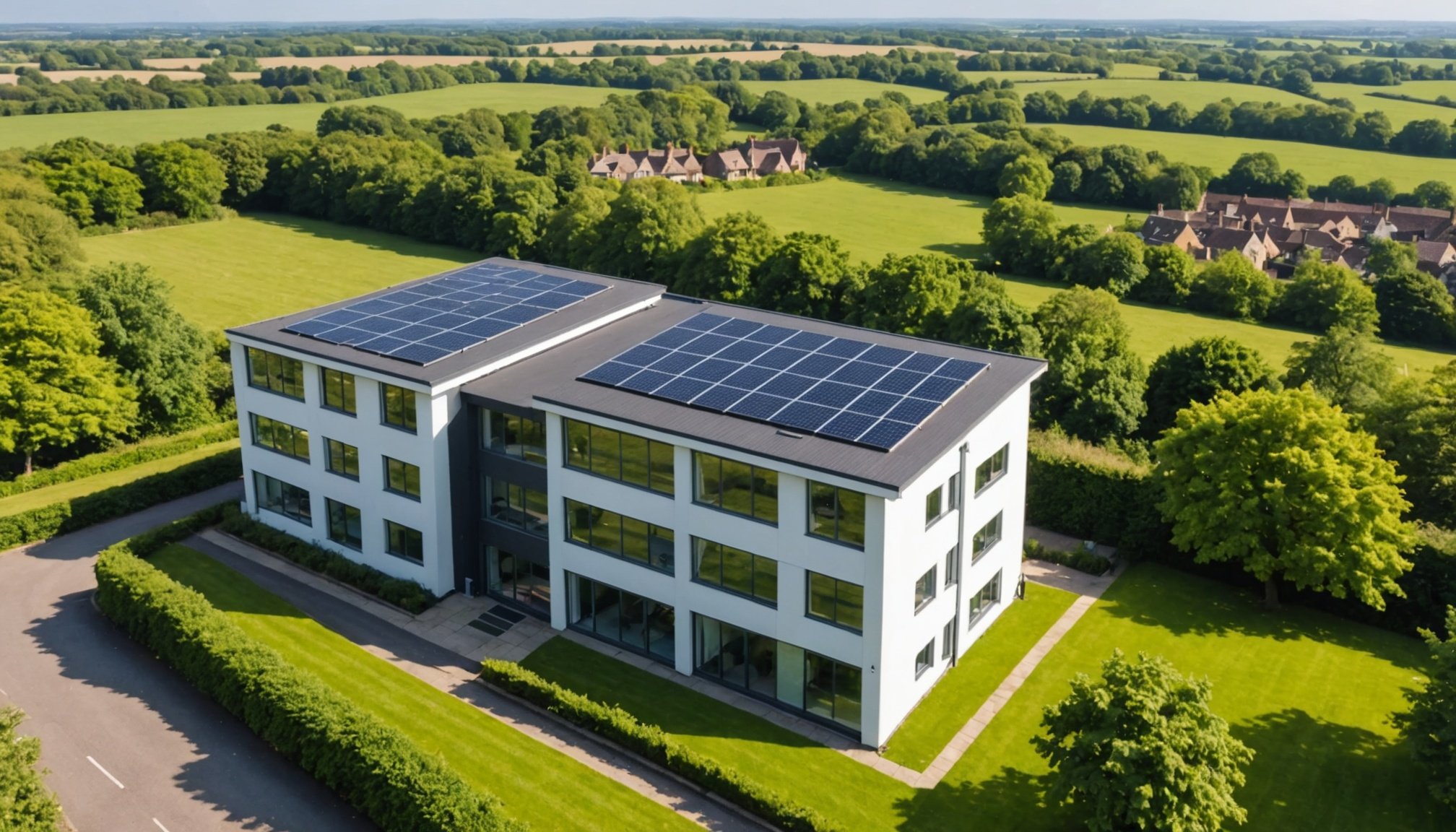Overview of Green Business Loans in the UK
In today’s eco-conscious market, green business loans have emerged as a vital support mechanism for companies aiming to adopt sustainable practices. These loans are tailored financial products designed to support initiatives that have a positive environmental impact. Essentially, green loans provide businesses with the capital needed to invest in energy-efficient projects, renewable energy sources, and other sustainable efforts, ensuring compliance with environmental regulations.
Importance of Sustainable Financing for UK Companies
The significance of sustainable financing cannot be overstated for UK companies. As global awareness of environmental issues grows, businesses face increasing pressure to operate sustainably. Access to green business loans allows companies to transition towards more eco-friendly operations without halting their economic progress. By prioritising sustainable financing, businesses not only contribute to environmental conservation but also improve their appeal to investors and consumers who value corporate responsibility.
Also to discover : Key Considerations for UK Investors Buying Property in High Flood Risk Zones
Overview of the UK Government’s Support for Green Initiatives
The UK government plays a crucial role in promoting green business loans by offering various incentives and support mechanisms. These may include interest rate subsidies, loan guarantees, and grants, all aimed at enhancing the appeal of sustainable investments. By actively supporting green initiatives, the government aligns itself with international standards and demonstrates its commitment to leading the charge towards a more sustainable future.
Benefits of Green Business Loans
Green business loans present compelling financial benefits, alongside a positive environmental impact. They can be financially attractive through financial incentives, such as reduced interest rates, which support eco-friendly projects. Businesses implementing sustainable practices might access special programs, created to incentivize environmental responsibility while minimising costs on loans.
Have you seen this : Essential Tax Insights for UK Investors: Navigating Property Purchases Through a Limited Company
Long-Term Savings
Another integral advantage is the potential for significant long-term cost savings. Investing in energy-efficient technologies can reduce utility expenses substantially. This step not only conserves resources but also allows businesses to operate more economically, increasing profitability over time. Through upgrading facilities or exploring renewable energy sources, businesses can mitigate recurring costs.
Corporate Responsibility
The adoption of sustainable practices extends beyond financial gains; enhancing a company’s corporate responsibility leads to a more substantial environmental impact. By prioritising green initiatives, organizations demonstrate commitment to ecological concerns, making them more desirable to environmentally-conscious consumers and stakeholders. This fosters a positive public image, thereby expanding market opportunities and enhancing brand loyalty.
Overall, a green business loan does more than just tap into fiscal growth; it enables businesses to champion eco-conscious actions while relishing economic advantages. Through these financial solutions, companies can proficiently balance profitability with sustainable practices, nurturing a greener and more responsible corporate ethos.
Eligibility Criteria for Green Business Loans
Understanding the eligibility criteria for green business loans is crucial for businesses aiming to secure funding. In the UK, loan eligibility often depends on several key factors that assess both the financial health and environmental impact of the business.
Common Eligibility Criteria
Businesses must meet specific business requirements to qualify for green loans. These typically include:
- A solid business plan that aligns with green or sustainable objectives.
- Demonstrating financial stability and creditworthiness.
- Compliance with legal and regulatory standards.
Qualifying Projects
Not all projects qualify for funding. Projects typically must focus on energy efficiency, renewable energy, or other environmentally sustainable goals. Examples include installing solar panels, upgrading to energy-efficient systems, or reducing waste production.
Environmental Standards and Certifications
Meeting certain environmental standards is often crucial. Businesses may need to obtain certifications such as ISO 14001, which outlines requirements for effective environmental management systems, to showcase their commitment to sustainability.
By preparing and aligning with these qualifying criteria, businesses can navigate the path towards securing green business loans, driving both financial and environmental benefits.
Application Process for Green Business Loans
Navigating the application procedure for a green business loan may seem daunting, but with the right guidance, it can be a smooth process. Approaching the loan process methodically ensures efficiency and clarity at each step.
Step-by-Step Guide
- Research and Eligibility: Start by identifying lenders who offer green loans. Ensure your business meets their eligibility criteria.
- Gather Documentation: Assemble all required documentation, which typically includes business financial statements, proof of environmentally friendly practices, and a detailed business plan.
- Complete the Application: Fill out the lender’s application form thoroughly. Make sure to highlight how your business supports sustainability.
- Submit Your Application: Once all documentation is ready, submit your completed application to the lender.
Required Documentation and Information
To streamline the loan process, prepare a comprehensive package of documents. This often includes:
- Business licenses
- Tax returns
- Financial projections
- Evidence of eco-friendly initiatives
Timelines and Processing Periods
After submission, the waiting begins. Be prepared for a typical timeline where initial responses might take a few weeks. Subsequently, processing periods can vary, but being prompt in providing any additional information requested by the lender can expedite the process and demonstrate your commitment.
Case Studies of Successful Property Upgrades
Exploring success stories in property upgrades reveals how UK companies effectively leveraged green loans to enhance property value and sustainability. These project examples demonstrate the practical application and outcomes of investing in eco-friendly improvements.
One notable example is a commercial property firm that used green loans to retrofit their office spaces. By upgrading to energy-efficient lighting and installing smart thermostats, they reduced energy consumption by 30%. Such upgrade case studies highlight significant cost savings and reduced carbon footprints.
In another instance, a residential developer utilised green financing to integrate solar panels and high-performance insulation in new builds. This not only increased the appeal to eco-conscious buyers but also led to a 40% reduction in utility costs.
Lessons learned from these case studies emphasise the importance of strategic planning and clear objectives. Establishing a comprehensive upgrade plan tailored to specific property needs ensures maximised benefits from green loans. Furthermore, collaboration with energy experts and contractors enhances project outcomes, minimising unforeseen challenges.
By examining these case studies, stakeholders gain valuable insights into the tangible benefits of sustainable upgrades, fostering more informed decisions in property development and refurbishment projects.
Tips for Finding and Applying for Green Business Loans
Exploring funding sources for green business loans can seem overwhelming, but understanding the resources available can simplify your journey. Numerous resources and organisations, such as government agencies and environmental programs, offer green loans. It’s crucial to leverage these loan resources to ensure you find the best fit for your business.
When choosing a loan, consider key factors like interest rates, repayment terms, and the alignment of the loan with your business’s environmental goals. These components will influence the financial health of your enterprise and its potential impact on sustainability.
While navigating the application process, there are common pitfalls to avoid. Make sure to thoroughly research and understand the eligibility criteria and documentation required for each loan product. It’s equally important to present a strong business plan that clearly outlines your sustainable initiatives and their potential environmental benefits.
To improve your application success rate, explore various funding sources and gather input from advisors familiar with green finance. Regularly review your application to ensure it’s free from errors and accurately reflects your business’s goals. Taking these steps can increase the likelihood of securing the necessary funds to grow your environmentally conscious business.











